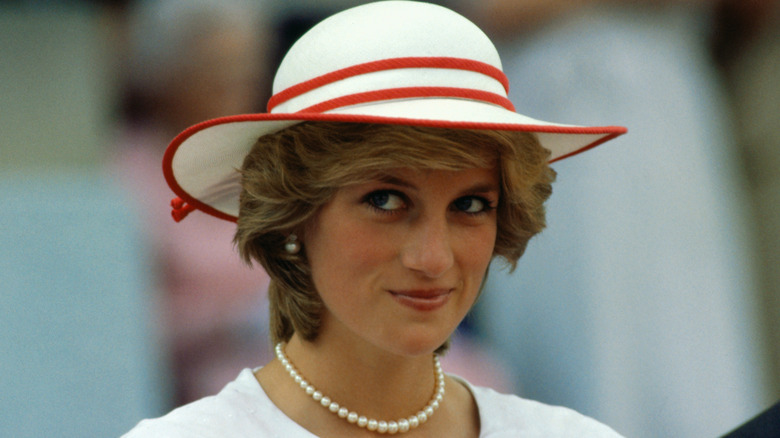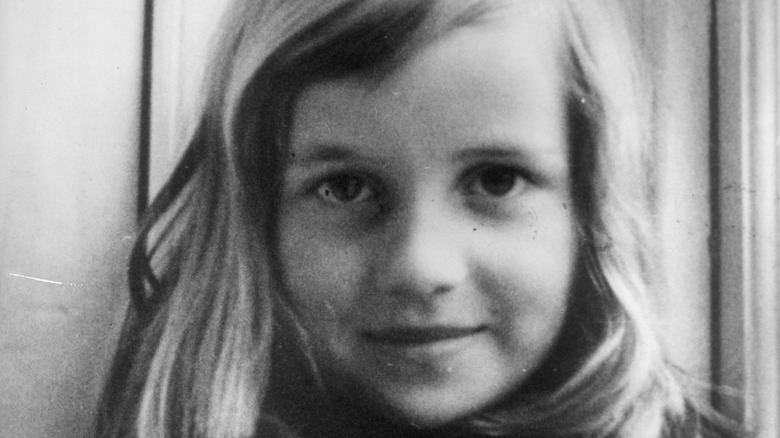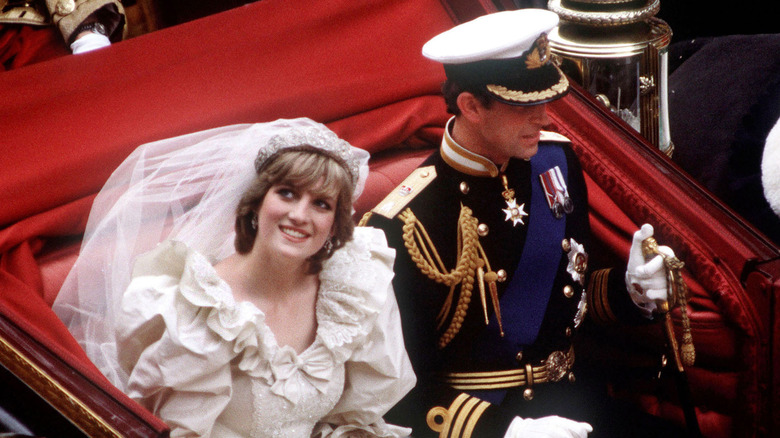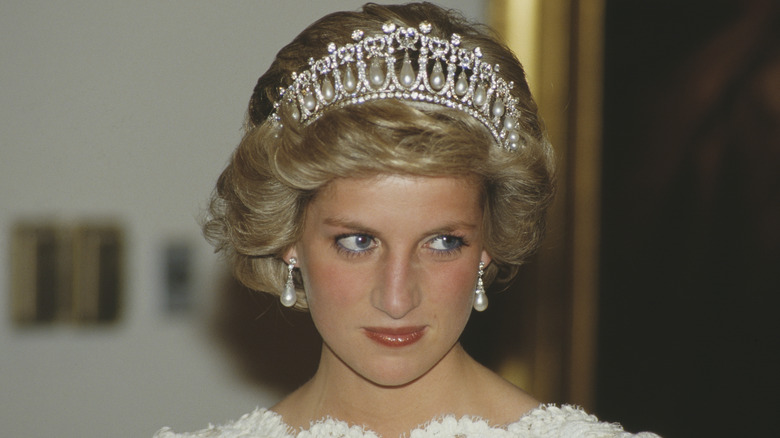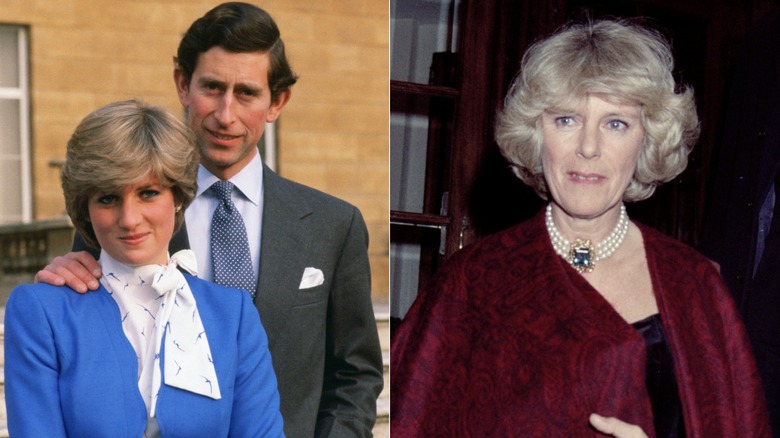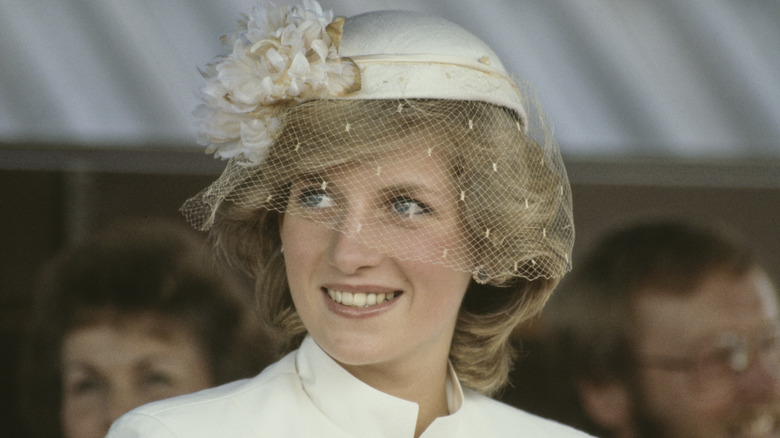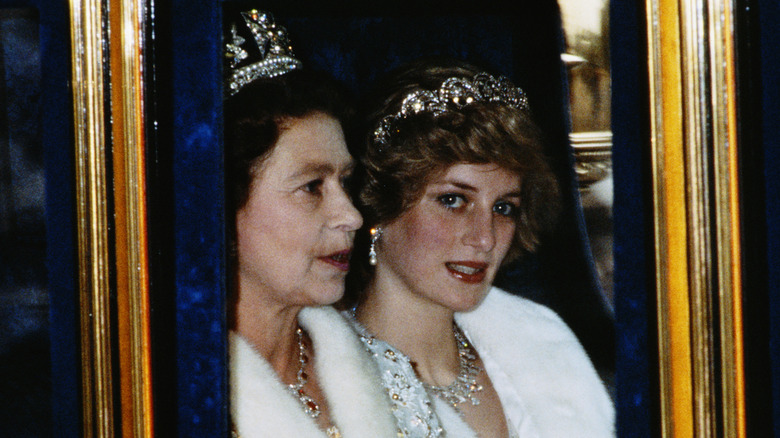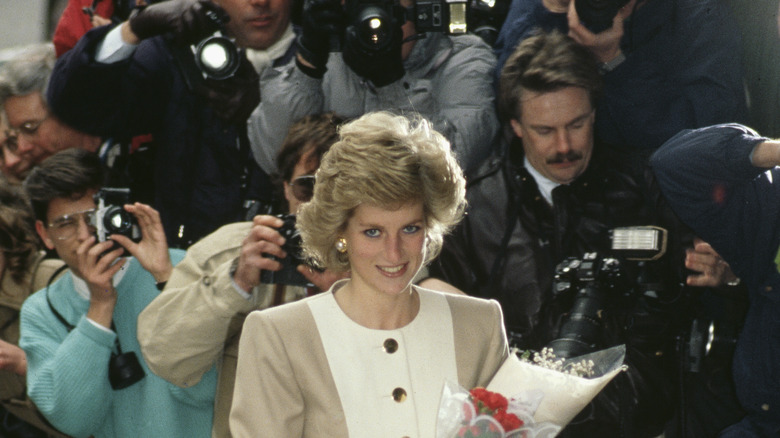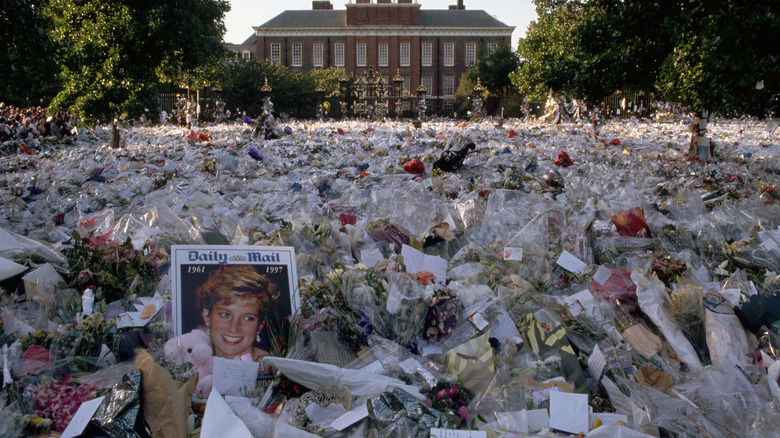Tragic Details About Princess Diana
Diana, Princess of Wales, captured the world's undivided attention with her grace, compassion, and commitment to philanthropy. Born Diana Frances Spencer, "The People's Princess" was the first wife of King Charles III (then Prince Charles) and the mother of their two children, Prince William and Prince Harry. The princess was given her royal role at just 20 years old and served until her and Prince Charles's divorce in 1996.
During her time in the royal family, Diana became a beloved figure known for her kindness, vulnerability, and down-to-earth nature. She was also highly revered for her impeccable fashion sense (The revenge dress, anyone?). She also became a symbol of modern royalty through her refusal to conform to the old-school ways of the British monarchy.
While she is fondly remembered for her style, charity work, and motherhood, Diana's legacy is also marked by tragedy. From her tense upbringing to her body image issues and her tumultuous marriage to Prince Charles, Princess Diana suffered privately, but immensely.
Princess Diana had an unhappy childhood
Though she was not necessarily born into the British royal family, Princess Diana's upbringing was one of privilege and nobility. Born on July 1, 1961, Diana was the third child of John Spencer, the Viscount Althorp, and Frances, the daughter of the 4th Baron Fermoy in Ireland. At the time of her birth, Diana's parents were going through an unimaginable tragedy: their eldest son had recently perished just hours after being born. Following the devastation, the couple hoped for a baby boy to carry on the family name. Instead, they were blessed with baby Diana, and her brother Charles a few years later.
Sadly, the Spencers never recovered from losing their eldest son. John and Frances' marriage eventually fell apart due to cheating and stress, while Diana was just 6 years old at the time. After the separation, she and her siblings went to live with their father at Althorp and were raised by countless "young and pretty" nannies whom Diana resented.
"It was a very unhappy childhood," Diana confessed in her personal diaries (via OK!). "Parents were busy sorting themselves out. Always seeing my mother crying. Daddy never spoke to us about it. We never asked questions. Too many changes over nannies, very unstable, the whole thing." The holidays were particularly difficult for the family as they tried to navigate two households. By 13, Diana knew that she was ready for something more: she vowed to marry someone notable.
Her marriage was arranged for her at 16
When Lady Diana Spencer was 16 years old, her older sister, Lady Sarah McCorquodale, began dating Prince Charles. The year was 1977, and the future king was 29 years old at the time. The couple only dated for a short while. According to the Mirror, McCorquodale never saw a future with the prince; In fact, she admitted that she would not marry him "if he were the dustman or the King of England." Within two years of graduating from her finishing school, Diana began secretly dating Charles herself.
While time would later reveal the true nature of their relationship, in the early days, Diana and Charles seemed quite taken with each other. Apparently, as reported by Tatler, sources said Diana and Charles only met 13 times before getting engaged, and mostly communicated through phone calls. By July 1981, the couple were married with a highly publicized ceremony at St. Paul's Cathedral.
Decades later, a close friend of the family revealed (via the Daily Mail) that Diana and Charles "pretty much" had an arranged marriage. Well, that explains a lot. Most notably, it might explain the Princess' admitted disdain towards her prince charming. "God, what a sad man," she told biographer Andrew Morton, author of "Diana: Her True Story" (via Tatler).
Diana failed to adapt to royal life
Princess Diana's struggle to adapt to royal life was a well-documented aspect of her time in the royal family. Her marriage to Prince Charles in 1981 thrust her into the spotlight and she quickly became a global icon, however, Diana found it challenging to navigate the rigid and traditional expectations of the British monarchy.
Though she grew up in a noble family, Diana's upbringing was different from the traditional aristocratic circles of her new family. For one, Diana seemed a lot more warm, empathic, and down-to-earth than the typical royal, as demonstrated through her humanitarian work and the tenderness with which she raised her sons. "To the people, Diana was seen as in touch. She was a princess, but one who wasn't afraid to roll up her sleeves and get stuck in and that did the royal family a huge amount of good," British royal reporter Katie Nicholl told USA Today of the late princess.
Diana's approachable and kind nature broke boundaries outside of the royal family too. Most notably, in 1987 she was highly revered for shaking hands with an HIV patient without gloves. Due to false reports at the time, many believed that the virus could be contracted through skin-to-skin contact. This selfless act largely helped destigmatize the virus and convinced the public to not be afraid. Occasionally, Princess Di ran into trouble for breaking royal fashion protocol too, but the fashionista always knew how to rock it.
Diana's marriage to Prince Charles was tainted by cheating
From an outsider's perspective, Princess Diana's life was nothing short of a fairytale. However, the late princess was deeply unhappy, and one of the biggest sources of her unhappiness was her marriage to Prince Charles. In truth, the marriage was destined to fail before it even began.
According to Diana's astrologer, Penny Thorton, the wedding almost didn't happen. "One of the most shocking things that Diana told me was that the night before the wedding, Charles told her that he didn't love her," Thornton revealed in an ITV documentary (via People). "She didn't want to go through with the wedding at that point; She thought about not attending the wedding."
As we know, Diana would marry Charles anyway. Later, the People's Princess would reportedly admit that her wedding day was "worst day of [her] life" (via the Independent). After their union, Diana was often left alone while Charles visited his long-time friend and lover, Camilla Parker Bowles. Amidst the public pressures and lack of true feelings of love for each other, Diana and Charles separated in 1992 before their official divorce was finalized in 1996. Charles and Bowles continued their affair throughout the entirety of Charles and Diana's 15-year marriage and would go on to marry themselves in 2005, thus later making her the Queen consort.
She struggled with body image and her mental health
Princess Diana is fondly remembered as a beauty and style icon. In spite of this, the princess dealt with body image issues throughout her life. Her challenges with self-esteem and confidence were deeply exacerbated by the intense public scrutiny she faced on a daily basis. While the world regarded Diana as a fashionista and celebrated for her elegant style, the Princess battled with feelings of inadequacy regarding her appearance.
In a 1995 interview with the BBC (via Time), Diana opened up about her battle with bulimia — which she described as "a symptom of what was going on in [her] marriage." She often felt alone and empty after royal engagements and sought comfort in her disordered eating. "It's like having a pair of arms around you, but it's temporarily, temporary," she said. The late princess also admitted (via the Los Angeles Times) that she engaged in self-harm and attempted suicide five times.
Sadly, Diana didn't feel that there was anywhere she could turn to for support. "I was crying out for help, but giving the wrong signals, and people were using my bulimia as a coat on a hanger: they decided that was the problem — Diana was unstable," she added in her 1995 interview. Diana's openness about her body image and mental health challenges had a significant impact on the public's understanding of mental illness. Her vulnerability encouraged others to get help and solidified her legacy as a humanitarian and mental health advocate.
If you need help with an eating disorder, or know someone who does, help is available. Visit the National Eating Disorders Association website or contact NEDA's Live Helpline at 1-800-931-2237. You can also receive 24/7 Crisis Support via text (send NEDA to 741-741).
Her rumored beef with the Queen
Princess Diana's relationship with Queen Elizabeth II was complex. Initially, Diana was welcomed into the royal family with open arms and was praised for her warmth and charm. However, as Diana faced her own personal challenges and public scrutiny — particularly challenges related to her marriage to Prince Charles — her relationship with the queen became more and more strained.
Many believed that Queen Elizabeth, who was known for her stoicism and commitment to privacy and tradition, may have found it challenging to navigate the increasing public criticism of the personal lives of the royal family members. Additionally, many have speculated that managing the monarchy in the wake of Diana and Charles' divorce might've left a sour taste in the queen's mouth.
Nonetheless, sources close to the family maintain that there was no beef between and the late queen and princess. "She was very supportive of Diana," Andrew Morton, author of "Diana: Her True Story", told People. "Diana always felt that the queen was a kind of marital referee and that the Queen should really intervene over her husband's relationship with Mrs. Parker Bowles. But the queen's policy was to hope for the best."
Diana was harassed by paparazzi
Princess Diana's life was marked by relentless and intrusive media attention, particularly from the paparazzi. From the very beginning of her relationship with Prince Charles to the tragic circumstances surrounding her death, Diana faced harassment by photographers and tabloid journalists alike. The paparazzi was known for their aggressive tactics, often pursuing her relentlessly to capture candid and sensationalized images. The stress from this scrutiny played a big role in Diana's mental health struggles and discomfort in the public eye.
In an effort to take back her narrative, Diana was set on creating privacy for her children. However, she could only do so much: the incessant harassment the princess faced also deeply affected her young sons well into adulthood. In an ITV and HBO documentary called "Diana, Our Mother: Her Life and Legacy" (via Newsweek), Prince William revealed: "If you are the Princess of Wales and you're a mother, I don't believe being chased by 30 guys on motorbikes who block your path, who spit at you ... to get a reaction from you and make a woman cry in public to get a photograph, I don't believe that is appropriate. Harry and I ... we lived through that." Additionally, Prince Harry and his wife, Meghan Markle, repeatedly compared their media criticisms to the late Diana's.
Her tragic death changed British media
Princess Diana's death remains one of the most poignant moments in modern history. As mentioned previously, her life and relationships — particularly her romance with Dodi Fayed after her divorce — drew intense media interest, causing the paparazzi to pursue her with vigor.
The paparazzi's invasive pursuit met its tragic end on August 31, 1997, when Diana, along with Fayed, died in a car crash in the Pont de l'Alma tunnel in Paris. The sudden loss of the People's Princess sent shockwaves worldwide and marked the end of an iconic era full of fashion and rebellion for the British monarchy. Because the paparazzi were present at the crash scene, their role in the incident raised questions about the ethics and responsibility of media practices.
Millions grieved for Princess Diana. In the aftermath of her death, the renewed global discussion on the ethics of paparazzi culture sparked a need for stricter regulations to protect the privacy and safety of public figures. Many blamed the intense and intrusive media scrutiny Diana faced throughout her life for her devastating death. Additionally, her death left a void in the hearts of her young sons, Prince William and Prince Harry, who were just 15 and 12 years old at the time. To this day, the princess's legacy lives on through her humanitarian work, timeless grace, and the powerful impact she had on reshaping paparazzi culture and the public perception of the British monarchy.

